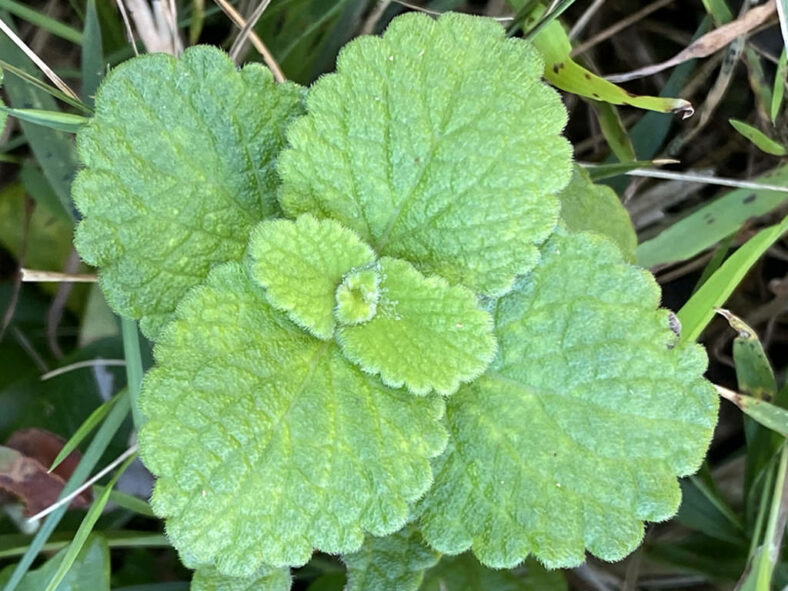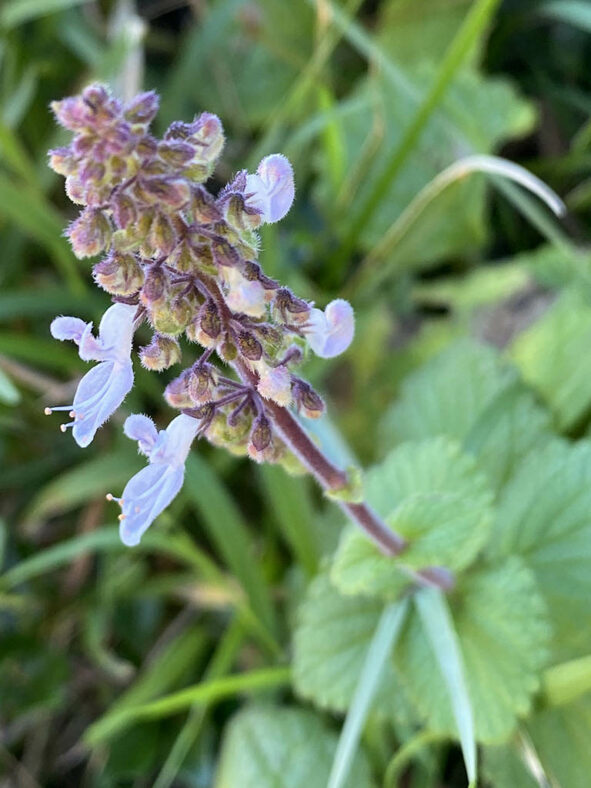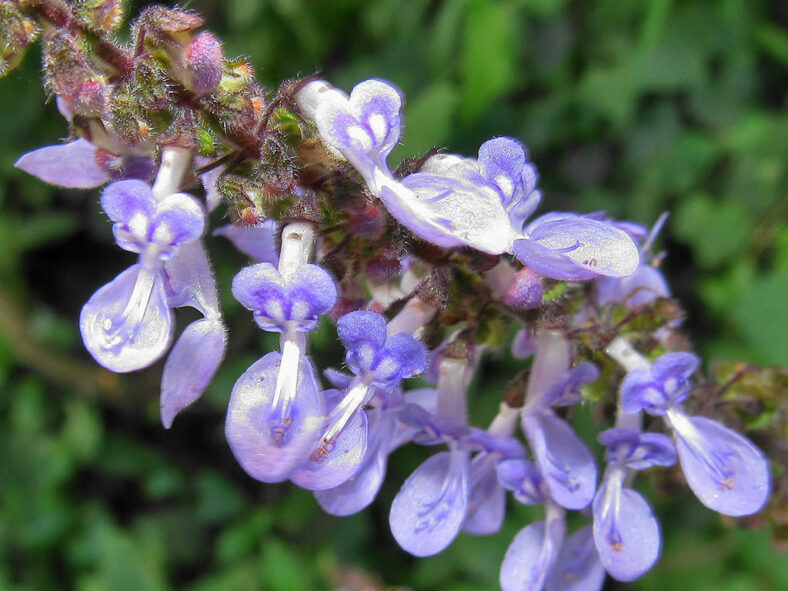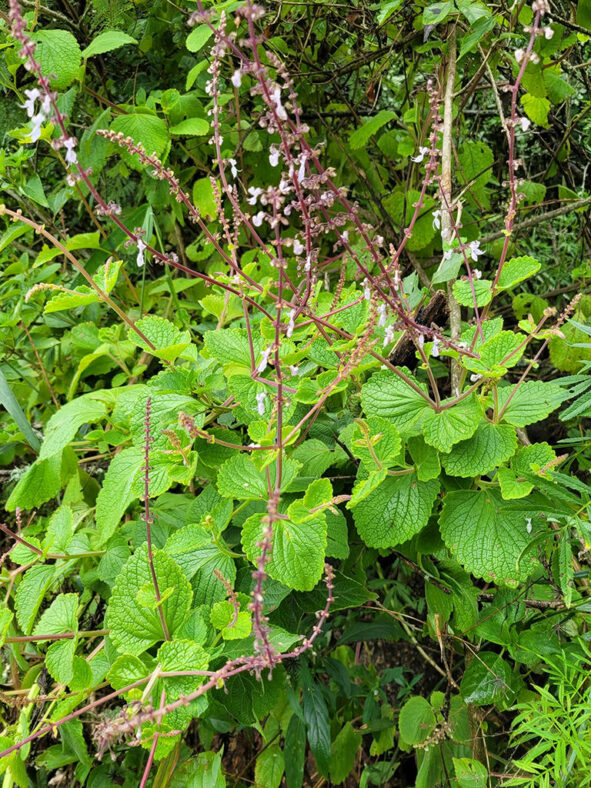Coleus hadiensis is commonly grown as an ornamental plant due to its ease of cultivation, propagation, and maintenance. It was also used as a fishing poison and an enema in traditional medicine.
Scientific Name
Coleus hadiensis (Forssk.) A.J.Paton
Common Name(s)
Hairy Coleus, Hairy Spurflower, Succulent Coleus, Vicks Plant
Synonym(s)
Ocimum hadiense, Plectranthus hadiensis, Plectranthus hadiensis var. tomentosus
Scientific Classification
Family: Lamiaceae
Subfamily: Nepetoideae
Tribe: Ocimeae
Subtribe: Plectranthinae
Genus: Coleus
Etymology
The specific epithet "hadiensis (had-ee-EN-sis) refers to the mountains near Al-Hadiyah, a village in east-central Yemen, where Peter Forsskål first collected the species.
Origin
Coleus hadiensis is widespread in tropical Africa and on the Arabian Peninsula. It grows in forest margins in dry woodland and among rocks in grassland at elevations ranging from 3,610 to 7,550 (1,100 – 2,300 m).
Description
Coleus hadiensis, formerly known as Plectranthus hadiensis, is a semi-succulent shrub with erect to decumbent stems and ovate to subrotund leaves with toothed margins. It can grow up to 5 feet (1.5 m) tall and 3.3 feet (1 m) wide. The leaves are green, densely velvety hairy, and have coarse textures. They can measure up to 4.2 inches (10.5 cm) long and 4 inches (10 cm) wide. The leaves are attached to the stem by a petiole up to 1.6 inches (4 cm) long and arranged alternately with axillary buds at the base of petioles.
From fall to winter, Coleus hadiensis produces flowers, usually in shades of mauve to purple or rarely white. The terminal inflorescence is simple or with one to two pairs of side branches near the base and can grow up to 20 inches (50 cm) long. The flowers are bilabiated with a tube-shaped corolla up to 0.6 inches (1.5 cm) long. They are arranged in whorls up to 1.2 inches (3 cm) apart.

How to Grow and Care for Coleus hadiensis
Light: Coleus hadiensis thrives in bright, indirect light. Choose a location that receives sun only for part of the day or a shady spot beneath a tree. Indoors, place the plant in a spot that gets direct light for most of the day.
Soil: The most important factor in growing this plant is ensuring it is planted in well-draining soil. Mix standard potting soil with perlite or sand to ensure adequate drainage.
Temperature: Coleus hadiensis thrives in subtropical and tropical locations. However, it can do well in cooler climates if grown in a pot and brought indoors during winter. It grows best in USDA Plant Hardiness Zones 9a to 11b, with average minimum winter temperatures ranging from 20 to 50 °F (-6.7 to 10 °C).
Watering: Regular watering is essential for this plant to thrive. Water only when the top inch (2.5 cm) of soil has dried out.
Fertilizing: Coleus hadiensis benefits from fertilizing during the growing season, from spring to fall. A balanced liquid fertilizer is suitable for monthly use.
Repotting: You can use any pot with drainage holes to repot this plant. Ensure that the new pot is at least 2 inches (5 cm) larger in diameter than the old one.
Propagation: Coleus hadiensis is easy to propagate by division and stem cuttings. The best time to propagate is during the spring or early summer. You can also start it by sowing seeds indoors in the spring.
See more at How to Grow and Care for Plectranthus.
Toxicity of Coleus hadiensis
Coleus hadiensis is considered non-toxic to humans and pets, although the sap can cause minor skin irritation.
Links
- Back to genus Coleus
- Succupedia: Browse succulents by Scientific Name, Common Name, Genus, Family, USDA Hardiness Zone, Origin, or cacti by Genus
Photo Gallery
Click on a photo to see a larger version.


